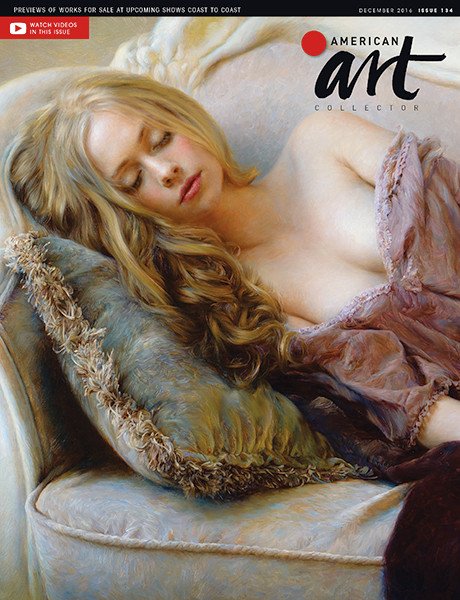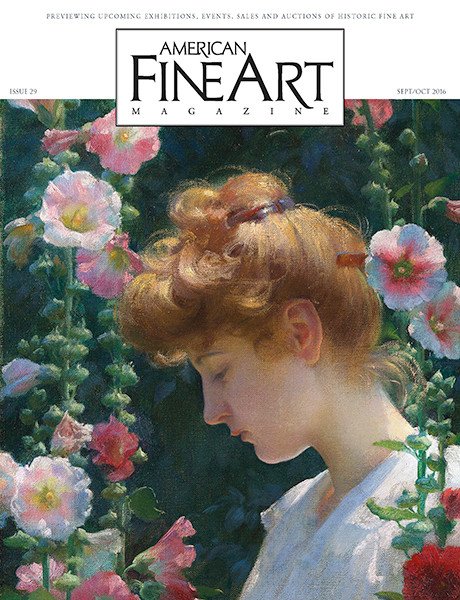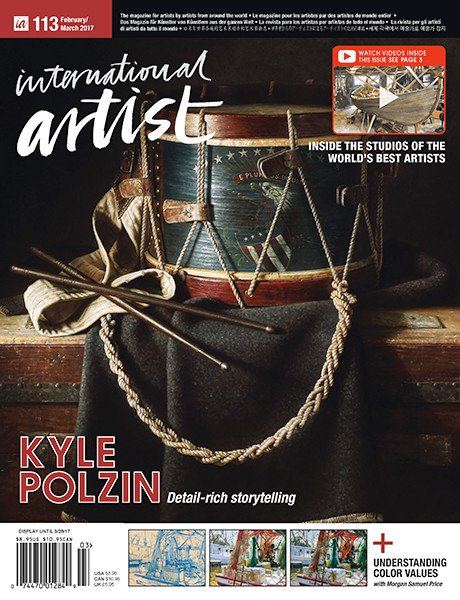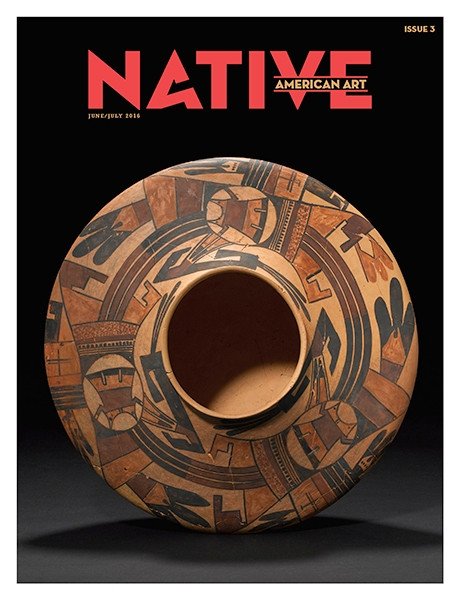An unmistakable romance runs through the medium of drawing, in part because the footprint in an artist’s luggage is quite small. Some paper and a pencil is all it takes. An artist could sketch from the back of a horse, from the soft glow of a crackling campfire, from the top rail of a cattle pen as bleating calves call out to their mamas. The drawing could come at an instant—no setup required.

Rachel Brownlee, Heralds of the Storm, charcoal on panel, 36 x 40 in.
And history has shown that’s how it happened in many cases, including by two of the most prominent early Western artists: Charles M. Russell and Edward Borein. Both men have numerous examples of works on paper—in pencil, charcoal, graphite and ink—showing how they were capturing images almost as the action was happening. Frederic Remington, another early artist who was fond of drawing, worked more from his studio, but those works show an immediacy as well, as if captured seconds after they occurred in real life.

Eric Bowman, Rabbit Hunter, acrylic ink, 15 x 10 in.
Cultures all around the world have used drawing as an art form for centuries—thousands of years if we include cave drawings and petroglyphs by Indigenous people—but Western art has always held a soft spot in its heart for the medium, from the time of Borein and Russell all the way to the present day. Medicine Man Gallery in Tucson, Arizona, will celebrate the art form with Masters of Drawing, opening February 15. More than 45 artists will have works in the show, including rare drawings from Ed Mell, who was represented by the gallery before his death in February 2024. More than 100 drawings are expected to be available to collectors.

The origins of the show go back to an exhibition at the Woolaroc Museum & Wildlife Preserve in Oklahoma. Medicine Man owner, Mark Sublette, was attending the exhibition opening and chatting with Thomas Blackshear II and Ezra Tucker. “I was telling Thomas how great his drawings are—they’re as good as anything I’ve ever seen. Ezra was listening and said someone should do a show just on drawings,” Sublette says. “I stood there for a moment and I said, ‘You’re right, someone should do a show. In fact, I’m going to.’ And that’s how it happened. It was very quick.”

Greg Newbold, Green River Towers, graphite and white charcoal on Strathmore gray-tone paper, 7½ x 11 in.
The gallery owner wanted a show, but he also desired a headlining event. He wanted to bring together many artists and encourage collectors to travel to the opening. He wanted to shine a bright spotlight on the medium. Not only is he hosting a show, but there will be a reception with many of the artists in attendance and awards for the artists, one of which will include an original Maynard Dixon drawing as a prize. (Western Art Collector, a media sponsor of the show, is presenting three awards at the event.)
“I want to do the show right,” Sublette says. “It needs to be a big deal, because drawing is a big deal. Just look at Dixon’s drawings—they were so important to who he was an artist. I want to acknowledge that for these artists.”

Scott Burdick, Da’Nika, charcoal on watercolor board, 31 x 17 in.
The show will include numerous media within drawing—including graphite, charcoal, colored pencils and other tools used for making marks—and it will also include drawings that are preliminary studies for larger works as well as works that are in their final form as a drawing. Participating artists are Tony Abeyta, Duke Beardsley, Shonto Begay, Teal Blake, Amery Bohling, Jill Carver, G. Russell Case, Stephen Datz, Glenn Dean, Logan Maxwell Hagege, William Haskell, Donna Howell-Sickles, Brett Allen Johnson, John Moyers, Howard Post, Kim Wiggins, Dennis Ziemienski and many others.

David Meikle, Mather Point Grand Canyon, graphite, marker and colored pencil, 9 x 12 in.
One drawing artist who has exploded in recent years is Rachel Brownlee, a Nebraska artist who will be showing several of her ultra-realistic pieces in the show. “I think my relationship with drawing is completely different from other artists because it is the end goal and not just part of the process. I not only use it to frame ideas, I have to work within the medium of charcoal using all of its benefits and drawbacks to achieve my convincing realism,” Brownlee says. “I try to work within what can be conveyed well using only values and work with charcoal’s strengths to produce pieces that showcase its beauty. I think I have barely scratched the surface of what charcoal can convey.”

Susan Lyon, A Devotee to All That is Light, pastel on paper, 20 x 16 in.
Brownlee, who will be showing a still life piece and an outdoor scene with horses, has fine-tuned her process and materials to suit her work. “My process is unique compared to anyone else I have heard of in my four years in the art world. I use panels with a sandpaper surface and then I use pencils and brushes to apply charcoal. The deep blacks people remark on are just charcoal pressed into the surface of the panel. I leave all my highlights uncovered from the start, which is why they are so bright in my final work,” she says. “Charcoal never erases completely from the sandpaper surface, so I have to leave the highlights. That is part of why my work takes such a long time. When I complete a piece, I brush varnish it using the same varnish as many oil painters. The varnish saturates my pieces just like it would an oil painting giving very rich blacks.”

Jordan K. Walker, Above Spider Rock, charcoal on paper, 18 x 24 in.
Medicine Man regular Greg Newbold will be offering several new works in the show. He came to drawing like many artists before him. “I was trained as an illustrator where good drawing was always emphasized. I almost always had to submit a final drawing to clients before I started painting so there were no surprises in the final art. Over the years, I have realized that I am more of a drawer than a painter. I tend to work out my ideas and compositions first in drawings, focusing on shape and value relationships, and getting a drawing that I like before I move on to color and paint. A majority of my paintings still start in my sketchbook before I ever pick up a brush. The more problems I solve at the thumbnail and drawing phase, the easier it is for me to focus on color, paint strokes and surface texture in the final painting rather than having to work through the drawing and design issues at the same time. As for the final medium, I create most of my gallery work in oil, but I also use acrylic, digital, watercolor, gouache and of course pencil, depending on what I am trying to accomplish. Skills and ideas are transferable across mediums. It just depends on the look you are trying to achieve.”

Josh Gibson, Eternity, ink on bristol paper, 10 x 15 in.
When artists look at paintings, they will sometimes comment about the drawing within the painting, which might sound perplexing to some. Newbold explains what they mean: “I believe when one says, ‘it’s all about the drawing,’ they are referring to accuracy and believability. First, accuracy is something that is very important to selling the illusion of a painting. That doesn’t mean things need to be photographic. In fact, I prefer them not to be. Rather, things need to be depicted accurately enough to convince the viewer to believe what has been painted,” he says. “This idea is particularly noticeable if accuracy falls short when depicting figures and faces. It’s a lot easier to see that a hand looks wrong or an eye placement looks off than to think that a tree is drawn wrong. I don’t think something needs to be perfectly accurate to be convincing. I love the idea I heard from David Dibble that ‘if it looks right, it is right.’ I always try to reach for believability in everything I paint even when I lean into my tendencies toward stylization, simplification and exaggeration.”

Ezra Tucker, Bull Elk Drawing, pencil on canvas, 30 x 40 in.
Eric Bowman, who will be showing a magnificent figure in the show, expands further: “Painting is basically drawing in a wet or any non-dry medium, so it’s nearly the same thing; applying marks, strokes or scrubbing paint around in a purposed direction to build a composition,” he says. “Hand-eye coordination is involved in both drawing and painting, even in abstract forms or with tools that don’t touch the surface, such as an airbrush. Basically, drawing is at the foundation of every painting—it is the employed fundamental motor skill.”
Susan Lyon will be participating in Masters of Drawing, and says that the medium is part of many art journeys, including her own. “I did start drawing before I picked up a paintbrush, but my school taught drawing by shading with line and contouring the outside boundary. I had a hard time learning that way. It wasn’t until I started to mass in the shadows as a whole did I learn to draw correctly,” she says. “We all learn differently. I don’t like to use lines to define shapes, but I like to use lines as a design element to lead the eye around the composition. My favorite way to draw is to think about positive and negative spaces. I like to use strong light sources to define the shadow shapes.”

Roseta Santiago, Edison Eskeets, Navajo Runner, graphite on rag paper, 14 x 11 in.
Lyon’s husband, artist Scott Burdick, frequently uses drawing in his studio, and says that it can be a helpful reprieve from his easel. “Whenever I become burned out or too frustrated with painting, I love simply taking out my sketchbook and a few pencils and drawing. It’s amazing how you can capture something profoundly moving in a face or scene with such simple and inexpensive tools. When I’m drawing, I feel connected to those distant people who drew on cave walls and communicated across time, just as we all do when we scratch some simple lines on paper or wood or into rock,” he says. “Some of my favorite drawings are by people who have never taken an art class in their life. Who among us hasn’t looked at a drawing of a child and smiled? When you look at a drawing and feel an emotional reaction, that’s art. It’s as simple as that.”
Masters of Drawing will open February 15 with a reception from 4:30 to 6:30 p.m. The show will remain on view through March 1. —
Masters of Drawing
February 15, 2025, 4:30-6:30 p.m.
Mark Sublette Medicine Man Gallery
6872 E. Sunrise Drive, Suite 130, Tucson, AZ 85750
(520) 722-7798 www.medicinemangallery.com
Powered by Froala Editor







































